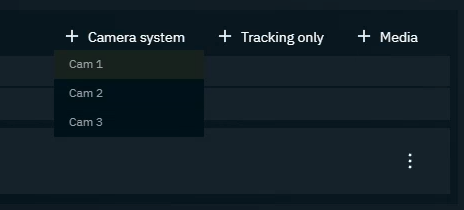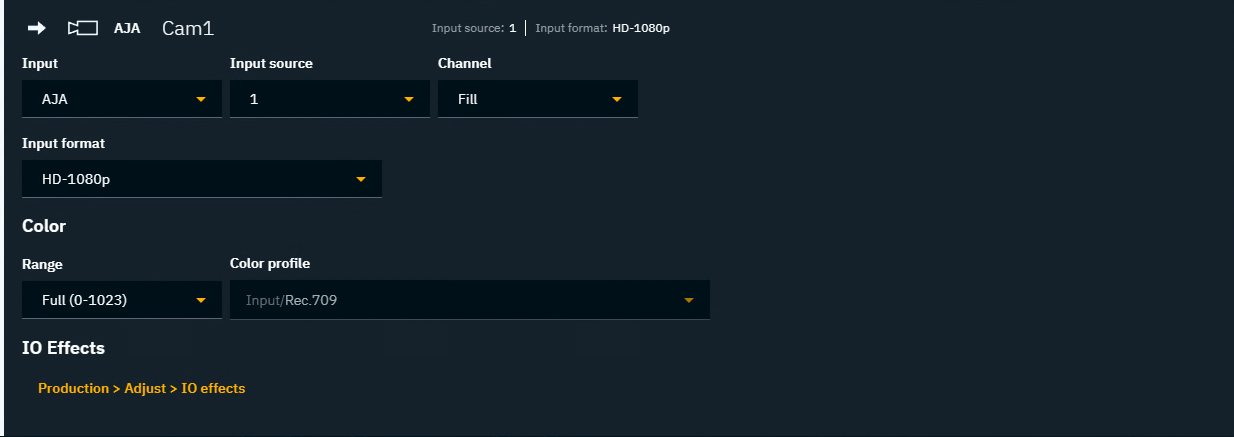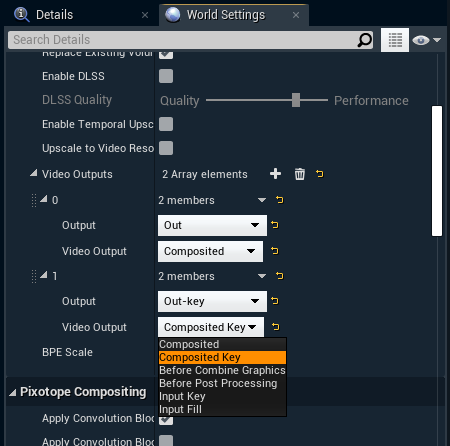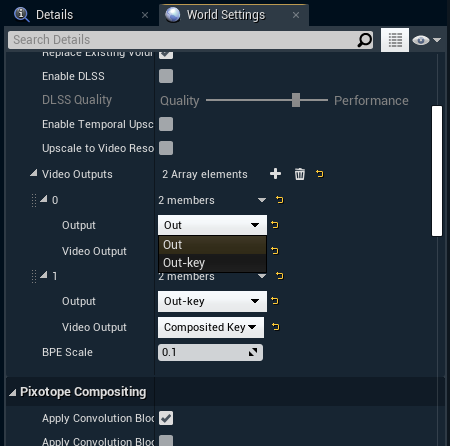Configure routing
Configure camera input switching
Learn more about how to Configure camera input switching
Set up routing
On SETUP > Configure > Routing: Camera systems and Media inputs & outputs are routed. For SDI signals (AJA and BMD) this means recreating the physical routing setup of your production.
Update the default settings of your show before you start routing.
Set up Lock/Genlock
Lock/Genlock is used to synchronize the camera and tracking data to provide guaranteed video output timing. There should be one common source for the Lock signal for all connected machines.
The Lock item is present on every connected machine and cannot be removed.
Set the Lock source

External ref | The Lock signal comes from an analog external reference signal. Both Blackburst and Tri-level syncs are supported. |
|---|---|
SDI(n) | The Lock signal is derived from a specified external SDI input’s video clock |
Freerun | an internal Lock signal is generated Freerun does not guarantee synchronisation with other machines. A warning is shown, if more than 1 machine with configured Routing (input and output routed) is connected. |
Set up Timecode
Learn more about how to Set up timecode in Director
Route a camera system
In the top-right corner of a machine, hover over "Camera system" and choose a camera system to route

A combined media and tracking input gets added and is automatically expanded

Unless camera input switching is enabled, only one camera system can be used per machine.
Alternatively, route Tracking only
In some cases, such as XR workflows, a video feed is not needed.
In the top-right corner of a machine, hover over "Tracking only" and choose a camera system to route

A Tracking item will be added and is automatically expanded

Update camera settings

Change Input and Input format if needed
Change the default in SETUP > Show settings to avoid repeating this step for each input
Set the Input source and adjust their settings
Learn more about Supported input and output types
Update color settings
Optionally for SDI: Adjust the Color range
Learn more about SDI signal range
Optionally: Override the Color profile

Learn more about how to Configure your color pipeline
Update camera tracking settings
Choose the Transmission method
Unicast |
Send data from a single tracking source to a single tracking service. Recommended if you have a single tracking source per tracking service OR if your tracking system can send reliably to multiple IP addresses.
|
|---|---|
Multicast |
Send data from a single source to a group of interested tracking services in a single transmission. Recommended if your tracking system does not allow sending to multiple IP addresses. Most current IP stacks support the IP multicast routing protocol. Check the manual of your network hardware for details.
|
From local video | Available only when extracting tracking data from video. Learn more about metadata support in Supported input and output types |
For Ncam SDK (TCP) tracking protocol:
Enter the Ncam’s server IP address. The port number cannot be changed.
Check tracking data status
Check the status field. It will either read:
xx Hz(incoming tracking data frequency)The setup was successful
No dataNo incoming tracking data detected. Check this item’s configuration.
Alternatively you can also
Inspect tracking data via the Tracking plotter
Show logs of the tracking service
in the Editor: check the Network status
Route additional media inputs
Add additional media inputs, if you need untracked video sources in your level (for example, the input for a virtual monitor).

Hover over Media and click "Input”
Name your input
Follow the steps in “Update media input settings” above
Learn more about how to Add a virtual monitor or other video feeds
Route media output
Hover over Media and click "Output"
Name your output
Change the Output format if needed
Change the default in SETUP > Show settings
Set the output destination and adjust their settings
See Supported input and output types for options
Optionally: Adjust the output type and format
Update color settings
Optionally for SDI: Adjust the Color range
Learn more about SDI signal range
Optionally: Override the Color profile
Optionally for SDI: Allow Super brights
By default super bright values are clamped, but can be allowed through for HDR workflows

Learn more about how to Configure your color pipeline
Route more than one output per machine
When doing external compositing checkout Configure external compositing
Unless for external compositing, this features is only available when using an XR multi-wall license
In Director
Route 2 or more media outputs to the machine
In case one of the channels is a key, choose "Key" in Output type

In Editor
Add 2 output channels by clicking the + icon on Pixotope World Settings > General > Video Outputs
Under "Video Output" choose the channels you want to output

Choose to which "Output" this channel should be mapped

Manage routing
Filter on machines or types
Use the filter and search bar on the top to focus on
Specific machines
Inputs or Outputs
Type of routed items

Manage machines
Items routed on a machine can be managed from the overflow menu on the right side of the machine.
Copy/Paste/Remove all items
Select "Copy items" on the source machine

Select "Paste items" on the target machine

Manage items
Routed items can be renamed or removed from the overflow menu on the right side of the item.
Rename/Remove item

Camera systems are managed through the Tracking item.
Warning system
Routing is crucial to have properly setup. Any issues found within a machine’s routed stack will show a warning icon. Hovering over it will display the issue found including a suggestion on how to resolve it.

Machine header
Contains all issues found in the routed stack.

When there are no issues detected, the machine header shows a checkmark.

Row item - collapsed
Contains all issues found in this routed item.

Row item - expanded
Shows the found issue next to the field.

